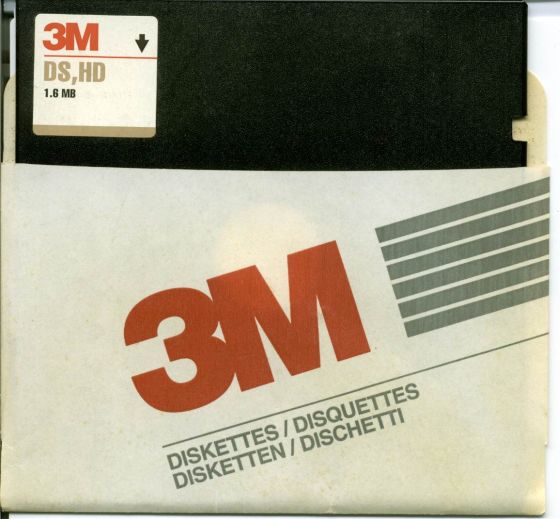3M floppy disks were an evolution of adhesive tape technology

3M, a chemical company known for products such as adhesives and Post-it notes, also once produced floppy disks. The technology media IEEE Spectrum explains the history of 3M floppy disks.
The Rise and Fall of 3M's Floppy Disk - IEEE Spectrum
https://spectrum.ieee.org/3m-floppy
The first recording medium developed by 3M was magnetic tape (open reel) used for recording sound. 3M released the adhesive tape ' Scotch Tape ' in 1925. In 1930, they released a transparent adhesive tape. Brush Developmen, a manufacturer of audio equipment, noticed the affinity between the adhesive material developed by 3M and magnetic tape and approached 3M about jointly developing magnetic tape. The two companies cooperated to develop the Scotch brand open reel.

By
When IBM succeeded in developing the floppy disk in the early 1970s, many companies began developing their own floppy disks. 3M also rode the wave of floppy disk development and began mass production in the fall of 1973. According to IEEE Spectrum, while many manufacturers developed floppy disks using their experience in developing computer-related products, 3M developed floppy disks based on its experience in developing materials. For this reason, 3M was in an advantageous position to improve the floppy disk product.

3M was confident in the reliability of its floppy disks and ran ads to promote their reliability. The following movie is a 3M floppy disk commercial that aired in 1984, and it appeals to the reliability of its products with the catchphrase, '3M floppy disks give you one less thing to worry about.'
80's Ads 3M Diskettes Floppy Disks 1984 remastered - YouTube
3M continued to actively pursue research and development even after the release of the floppy disk, and in 1991, in collaboration with Iomega and Maxell, developed the Floptical , a magnetic storage device shaped like a floppy disk and with a capacity of 21MB.
By 1995, 3M's magnetic storage division had grown into a $2.3 billion business. However, in the late 1990s, the number of computers without floppy disk drives began to increase, and the floppy disk market rapidly shrunk. In 1996, 3M transferred its floppy disk business to a spin-off company called Imation and withdrew from the storage business. Imation then changed its name to GlassBridge Enterprises. In 2017, GlassBridge Enterprises sold the rights to the Imation trademark to the Korean company O-Jin Corporation.
Although floppy disks continue to be used in some fields at the time of writing, there is a gradual movement to discontinue their use due to low availability of floppy disks. For example, it was well known that floppy disks continue to be used in the Nishijin weaving loom system, but on January 15, 2024, the Kyoto City Industrial Technology Research Institute announced a new controller that does not require floppy disks. Also, on January 22, 2024, the Ministry of Economy, Trade and Industry announced a review of the 'Provisions for the Use of Specific Recording Media Such as Floppy Disks for Application and Notification Methods.'
In order to review regulations that specify floppy disks (FDs) and other media as recording media, the Ministry of Economy, Trade and Industry revised the ministerial ordinance (Digital Principle) (METI)
https://www.meti.go.jp/press/2023/01/20240122004/20240122004.html

◆ Forum is currently open
A forum related to this article has been set up on the official GIGAZINE Discord server . Anyone can post freely, so please feel free to comment! If you do not have a Discord account, please refer to the account creation procedure article to create an account!
• Discord | 'Which manufacturer's floppy disk was your favorite? Did you even buy specific manufacturers?' | GIGAZINE
https://discord.com/channels/1037961069903216680/1226834748672970794
Related Posts:
in Hardware, Posted by log1o_hf






